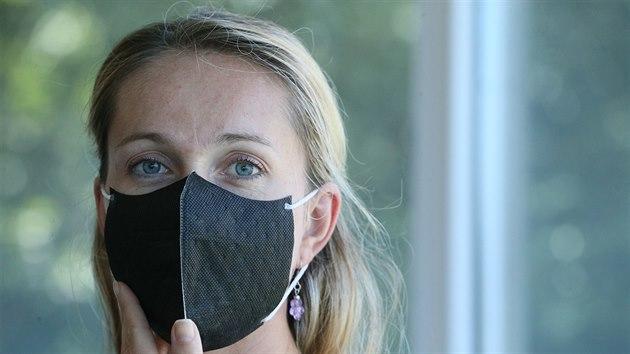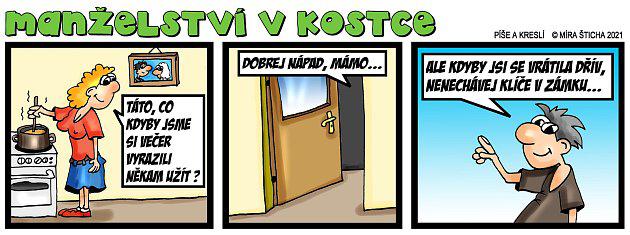The Czechia is a nanovelmoc.The "miraculous" material is made of masks and clothing<
Do you know which nanomaterial is the most used in the world? Several million tons of it are produced annually. You have no idea? No, they are not nanoveils.
You will be surprised. It is soot, ordinary soot, which is "produced" by the imperfect combustion of organic matter. It contains carbon particles between 10 and 500 nanometers in size, with the suffix nano- meaning one billionth of a meter. This is just being added in front of such very small "things", so you must have heard talk about: nanoparticles, nanomaterials, nanofibers, as well as nanotechnologies, nanobots, but also nanotextiles or nanoveils, nanocoatings or nanosurfaces, etc.
For the latter group (nanotextiles, nanoveils, etc.) we are no longer talking about objects with dimensions of billionths of a meter, but the suffix nano- here refers to the fact that they are made of nanomaterials.
As the soot has already told us, man has been dealing with nanoparticles for the longest time, even if he did not call them nanoparticles. Already in ancient times, during the production of glass and especially its color effects, metal powders (gold, silver, zinc, sulfur, etc.) were added. These metal powders have particles that are just nanometers in size. During the Renaissance, nanoparticles of copper and silver were used to glaze ceramics. In short, humans have been using the properties of nanoparticles for a relatively long time.
A nanoworld for a reward
In the late 1950s, American physicist Richard Feynmann sparked interest in the nanoworld and nanotechnology in his lecture "There's Plenty of Room at the Bottom". In it he asked the cardinal question "Why can't we write 24 volumes of the Encyclopaedia Brittanica on the head of a pin?" and then offered financial rewards for whoever could make an electric motor that could fit into a cube with an edge of 0.4 mm, or write one page of the book's text reduced to one 25 thousandth of the original area. By the way, both have already been achieved. Anyway, it opened up a more massive exploration of the nanoworld.
Independently of nanoparticles and nanotechnology, the development of nanofibers, i.e. fibers whose diameter is below a maximum of 1,000 nm, took place. Here too, and this may come as a surprise to many, we can talk about a much longer history. The production of nanofibers is closely related to liquid substances. As early as 1600, the Englishman Gilbert discovered that a drop of water can be drawn into conical shapes in an electric field. In 1902, J.F. Cooley patented a device for the electrical dispersion of liquids.

And already at the beginning of the 20th century, the Czech-American scientist John Zeleny, who designed a needle/capillary device for the study of electric discharges from liquid points, also intervened in it. This later provided the basis for one of the most common methods of nanofiber production, namely the electrospinning method.
How nano is "spun"
However, it is not the only method of nanofiber preparation. The professional literature distinguishes several of them, and since it is a young and highly developing field, their number has been constantly expanding.
These include melt blowing, physical elongation, hydrothermal process, centrifugal spinning and more.
World Czechs
During the nineties of the 20th century and subsequently, especially at the beginning of the new millennium, the study, development and research of nanofibers gained rapid momentum. Czech research and development played a big role in this.
In 2003, a team led by Professor Oldřich Jirsák at the Faculty of Nonwoven Textiles of the Technical University in Liberec came up with an original idea for the production of nanofibers on an industrial scale, which was patented the same year.
Subsequently, he begins to cooperate with Ladislav Mareš's ELMARCO company, and soon together they present the first machine for the production of nanofibers called the Nanospider. It is based on the electrospinning method, but does not use any nozzles or capillaries for fiber formation. Its main advantage is that it is able to create nanofibers on a truly industrial scale.
A year later, ELMARCO presents the first prototype of a machine built on Nanospider technology, which enables the continuous production of nanofibrous textiles with a width of 1.5 m. In 2005, the company is the only supplier of Nanospider devices in the world.
In the same year, the field of development and research of nanofibers and nanofiber textiles experienced unprecedented development all over the world, but especially in the Czech Republic. It is not only in Liberec at the Technical University, the very strong development and development of technologies for the preparation of nanofibers is also visible in regions with a tradition in the chemical industry, such as the Ústí Region, because the starting material for the "weaving" of nanofibers is polymer solutions. It is here that we find companies such as Nanovia (today Nanotex) or Pardam Nano4Fibers in Roudnice nad Labem, which have more than ten years of tradition in the production and development of nanofibers. Which is practically a short time since the beginnings of the field's development. Both companies already have a significant reputation in the world.
"Miracle" material
In the last 15 years, the field of nanofibers and nanomaterials has seen a great boom, Czechs have stood and continue to stand by it. But why? What's so great about nanofibers? Nanofibers and nanomaterials primarily have a huge surface area, which makes the materials extremely porous, and nanofiber textiles are highly breathable, but with unique abilities to capture - for example, viruses, bacteria, allergens or dirt.
Nanofibers and nanotextiles are used in medicine (respirators, masks, but also antibacterial bandages, etc.), in industry as filter equipment, in the textile industry as functional materials, nanomaterials are used in energy for lithium batteries, hydrogen storage, in the petrochemical industry for specific properties of paint materials, etc.
In short, there is a really large number of possible applications, and researchers promise great things from them in the future.


 Tags:
Tags: Prev
Prev







